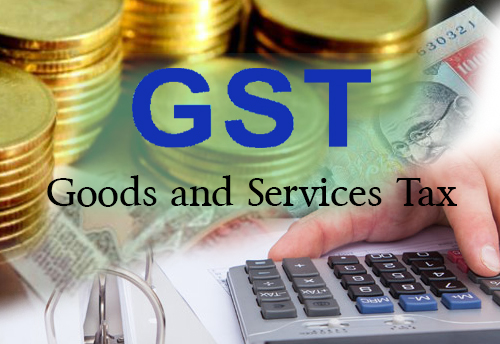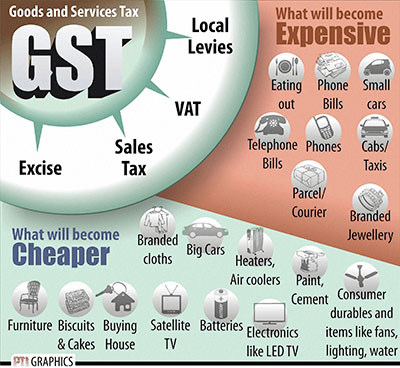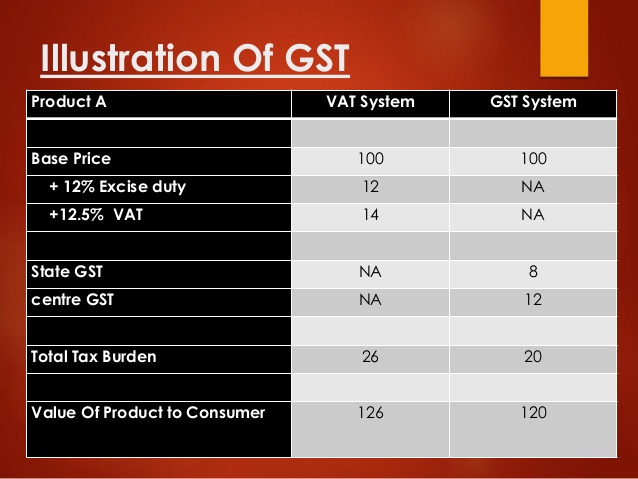
WHAT IS GST?
GST i.e.Goods and Service Tax is a unified tax that replaces several indirect taxesleviedby the Central Government and the State Government(s)....
Read more|
115JA. Deemed income relating to certain companies. — (1) Notwithstanding anything contained in any other provisions of this Act, where in the case of an assessee, being a company, the total income, as computed under this Act in respect of any previous year relevant to the assessment year commencing on or after the 1st day of April, 1997 but before the 1st day of April, 2001 (hereafter in this section referred to as the relevant previous year) is less than thirty per cent of its book profit, the total income of such assessee chargeable to tax for the relevant previous year shall be deemed to be an amount equal to thirty per cent of such book profit.
(2) Every assessee, being a company, shall, for the purposes of this section prepare its profit and loss account for the relevant previous year in accordance with the provisions of Parts II and III of Schedule VI to the Companies Act, 1956 (1 of 1956) : Provided that while preparing profit and loss account, the depreciation shall be calculated on the same method and rates which have been adopted for calculating the depreciation for the purpose of preparing the profit and loss account laid before the company at its annual general meeting in accordance with the provisions of section 210 of the Companies Act, 1956 (1 of 1956) : Provided further that where a company has adopted or adopts the financial year under the Companies Act, 1956 (1 of 1956), which is different from the previous year under the Act, the method and rates for calculation of depreciation shall correspond to the method and rates which have been adopted for calculating the depreciation for such financial year or part of such financial year falling within the relevant previous year. Explanation.—For the purposes of this section, "book profit" means the net profit as shown in the profit and loss account for the relevant previous year prepared under sub-section (2), as increased by— (a) the amount of income-tax paid or payable, and the provision therefor; or (b) the amounts carried to any reserves by whatever name called; or (c) the amount or amounts set aside to provisions made for meeting liabilities, other than ascertained liabilities; or (d) the amount by way of provision for losses of subsidiary companies; or (e) the amount or amounts of dividends paid or proposed; or (f) the amount or amounts of expenditure relatable to any income to which any of the provisions of Chapter III applies; (g) the amount or amounts set aside as provision for diminution in the value of any asset, if any amount referred to in clauses (a) to (g) is debited to the profit and loss account, and as reduced by,— (i) the amount withdrawn from any reserves or provisions if any such amount is credited to the profit and loss account : Provided that, where this section is applicable to an assessee in any previous year (including the relevant previous year), the amount withdrawn from reserves created or provisions made in a previous year relevant to the assessment year commencing on or after the 1st day of April, 1997 but ending before the 1st day of April, 2001 shall not be reduced from the book profit unless the book profit of such year has been increased by those reserves or provisions (out of which the said amount was withdrawn) under this Explanation; or (ii) the amount of income to which any of the provisions of Chapter III applies, if any such amount is credited to the profit and loss account; or (iii) the amount of loss brought forward or unabsorbed depreciation, whichever is less as per books of account. Explanation.—For the purposes of this clause,— (a) the loss shall not include depreciation; (b) the provisions of this clause shall not apply if the amount of loss brought forward or unabsorbed depreciation is nil; or (iv) the amount of profits derived by an industrial undertaking from the business of generation or generation and distribution of power; or (v) the amount of profits derived by an industrial undertaking located in an industrially backward State or district as referred to in sub-section (4) and sub-section (5) of section 80-IB, for the assessment years such industrial undertaking is eligible to claim a deduction of hundred per cent of the profits and gains under sub-section (4) or sub-section (5) of section 80-IB; or (vi) the amount of profits derived by an industrial undertaking from the business of developing, maintaining and operating any infrastructure facility as defined in the Explanation to sub-section (4) of section 80-IA and subject to fulfilling the conditions laid down in that sub-section; or (vii) the amount of profits of sick industrial company for the assessment year commencing from the assessment year relevant to the previous year in which the said company has become a sick industrial company under sub-section (1) of section 17 of the Sick Industrial Companies (Special Provisions) Act, 1985 (1 of 1986) and ending with the assessment year during which the entire net worth of such company becomes equal to or exceeds the accumulated losses. Explanation.—For the purposes of this clause, "net worth" shall have the meaning assigned to it in clause (ga) of sub-section (1) of section 3 of the Sick Industrial Companies (Special Provisions) Act, 1985 (1 of 1986); or (viii) the amount of profits eligible for deduction under section 80HHC, computed under clause (a), (b) or (c) of sub-section (3) or sub-section (3A), as the case may be, of that section, and subject to the conditions specified in sub-sections (4) and (4A) of that section; (ix) the amount of profits eligible for deduction under section 80HHE, computed under sub-section (3) of that section. (3) Nothing contained in sub-section (1) shall affect the determination of the amounts in relation to the relevant previous year to be carried forward to the subsequent year or years under the provisions of sub-section (2) of section 32 or sub-section (3) of section 32A or clause (ii) of sub-section (1) of section 72 or section 73 or section 74 or sub-section (3) of section 74A. (4) Save as otherwise provided in this section, all other provisions of this Act shall apply to every assessee, being a company, mentioned in this section. |

GST i.e.Goods and Service Tax is a unified tax that replaces several indirect taxesleviedby the Central Government and the State Government(s)....
Read more
In pre-GST regime, goodswere liable to: (i) Excise Duty- on manufacture of goods; (ii) VAT/CST- on sale of goods; (iii) Entry tax- on ...
Read more
GST is levied on every taxable person. Taxable person means a person who carries on any business at any place in India. Such . ..
Read more
GST is a unified tax which is levied on: (i) goods; (ii) services and (iii) a mix of goods and/or services. Any supply of goods or services . .. ...
Read moreGST India Solution is an effort of firm of professionals who welcome implementation of GST. This is an interactiveplatformthat aspires to disseminate right knowledge to professionals, practitioners and public at large. This platform has beenfloatedbya firm of Chartered Accountants relentlessly working in field of direct and indirect taxes since early 1985.
READ MORE
Our core competence is statutory compliance, advisory, corporate tax planning and appellate matters of direct and indirect taxesandcorporate training sessions on GST.
The senior partner of the firm has to his credit several professional publications viz., Delhi Sales Tax Right to Use Goods Act, Delhi VAT, Maharashtra VAT, West Bengal VAT, Haryana VAT published by Taxmann. Madhya Pradesh VAT and Chhattisgarh VAT were published by Suvidha Law House, Bhopal. He has also addressed seminars on indirect taxes organized by professional bodies like ICAI, IMA, NIFM etc. and has also contributed articles on subjects of pro. . . . .